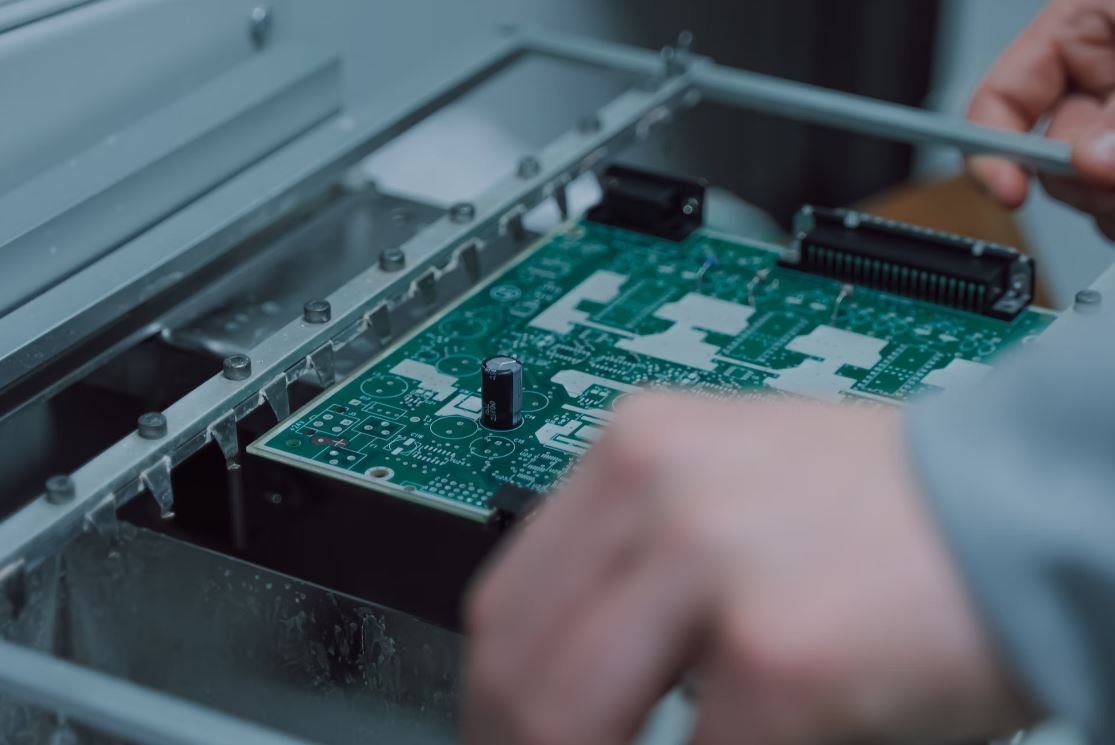Artificial Intelligence versus Natural Intelligence PDF
Artificial Intelligence (AI) and Natural Intelligence (NI) are two distinct types of intelligence, each with its strengths and limitations. While AI focuses on replicating human-like intelligence through technology, NI represents the cognitive capabilities possessed by humans. Understanding the differences and similarities between these two forms of intelligence can provide valuable insights into the current state of AI technology and its potential impact on various industries.
Key Takeaways
- Artificial Intelligence (AI) and Natural Intelligence (NI) are fundamentally different.
- AI aims to replicate human-like intelligence, while NI represents human cognitive capabilities.
- AI has made significant advancements but still falls short in areas where NI excels.
- AI technology has the potential to revolutionize various industries.
- Ethical concerns and the need for human oversight are important considerations in AI development.
**Artificial Intelligence** refers to the simulation of human-like intelligence in machines. It involves the development of computer systems that can perform tasks normally requiring human intelligence, such as visual perception, speech recognition, decision-making, and problem-solving. The goal of AI is to create systems that can think, learn, and adapt like humans, often by analyzing vast amounts of data. *AI technology has the potential to revolutionize industries such as healthcare, finance, and transportation, enhancing efficiency and enabling new possibilities.*
**Natural Intelligence**, on the other hand, is the innate ability of humans to understand, reason, learn, and make decisions. It encompasses a broad range of cognitive capabilities, including perception, language processing, creativity, and emotional intelligence. *The complex interactions and parallel processing ability of the human brain give rise to the unique problem-solving skills and adaptable nature of natural intelligence.* While AI can simulate specific aspects of NI, replicating the full spectrum of human cognitive abilities remains a challenge.
AI and NI differ in several key aspects:
| Artificial Intelligence (AI) | Natural Intelligence (NI) |
|---|---|
| Developed through programming and algorithms. | Innate cognitive capabilities of humans. |
| Relies on data input and analysis. | Perception and understanding of the environment. |
| Faster processing speed and scalability. | Rich contextual understanding and common sense. |
| Subject to pre-set limitations and biases. | Ability to reason and make complex connections. |
| Can perform repetitive tasks with high accuracy. | Adaptability and creative problem-solving. |
AI has made tremendous progress in recent years, with advancements in machine learning and deep neural networks contributing to notable breakthroughs. However, AI still faces challenges in certain areas where NI prevails, such as:
- **Common Sense Reasoning**: While AI excels at specific tasks, it often lacks the broad contextual understanding and common sense reasoning capabilities exhibited by humans.
- **Flexibility and Adaptability**: Natural intelligence allows humans to quickly adapt to new situations, learn from experiences, and apply knowledge to different contexts.
- **Emotional Intelligence**: AI systems lack emotions and empathy, which are essential for nuanced decision-making and understanding human behavior.
Despite these challenges, AI presents numerous opportunities for innovation and transformation. By leveraging AI technology, businesses can automate processes, improve efficiency, analyze vast amounts of data, and gain valuable insights for strategic decision-making. However, ethical considerations and human oversight are crucial factors to ensure AI is used responsibly and for the benefit of society.
The Potential Impact of AI on Industries
The potential impact of AI on various industries is immense. Here are three tables highlighting interesting insights and data points:
| Industry | AI Application | Impact |
|---|---|---|
| Healthcare | Medical image analysis, drug discovery, virtual assistants | Improved diagnosis accuracy, accelerated drug development, enhanced patient care |
| Finance | Automated trading systems, fraud detection, risk assessment | Increased trade efficiency, reduced financial fraud, better risk management |
| Transportation | Autonomous vehicles, route optimization, traffic management | Enhanced safety, reduced congestion, optimized resource allocation |
The potential benefits of AI extend beyond these industries, and the opportunities for AI integration are vast.
Ethical Considerations and Human Oversight
As AI continues to advance, ethical considerations become increasingly important. *While AI has the potential to improve human lives, it also raises concerns about privacy, security, job displacement, and algorithmic bias.* Human oversight is necessary to ensure AI systems are developed and deployed with careful consideration of ethical principles, legal frameworks, and societal impact. Collaborations between experts in AI, ethics, and policy-making are essential for responsible AI development and deployment.
In conclusion, AI and NI are distinct forms of intelligence, each with its strengths and limitations. AI technology has rapidly evolved, but it still faces challenges in replicating the full spectrum of human cognitive capabilities. *By understanding these differences and leveraging AI responsibly, we can harness the potential of AI technology to drive innovation, enhance efficiency, and improve the quality of life for individuals and societies alike.*

Common Misconceptions
Artificial Intelligence
There are several common misconceptions surrounding artificial intelligence (AI). Firstly, many people believe that AI is capable of reaching human-level intelligence. However, this is not currently the case as AI systems are still far from achieving the breadth and depth of human intelligence.
- AI is not yet as intelligent as humans.
- AI systems are limited by their algorithms and data.
- AI cannot truly understand human emotions or consciousness.
Natural Intelligence
When it comes to natural intelligence, one misconception is that all humans have the same level of intelligence. However, intelligence varies greatly among individuals. Factors like genetics, education, and experiences contribute to intelligence levels.
- Not all humans have the same level of intelligence.
- Intelligence is influenced by genetics, education, and experiences.
- Intelligence can be developed and improved over time.
Comparison between AI and Natural Intelligence
Another misconception is that AI can completely replace human intelligence. While AI has made significant advancements in various fields, it still lacks many qualities that make human intelligence unique, such as creativity, intuition, and empathy.
- AI cannot completely replace human intelligence.
- Human intelligence possesses unique qualities like creativity and empathy.
- AI complements human intelligence in certain tasks.
Job Market Implications
There is a common misconception that AI will lead to widespread unemployment as it takes over jobs. While AI can automate certain tasks, it also has the potential to create new job opportunities in fields related to AI development, maintenance, and supervision.
- AI automation can lead to job displacement in some areas.
- AI can create new job opportunities in AI-related fields.
- Human skills like creativity and critical thinking remain valuable in the job market.
Ethical Concerns
Lastly, there is a misconception that AI is morally superior to human intelligence. However, AI systems are only as ethical as the programming and data they are based on. They can inherit biases and make ethically questionable decisions if not properly designed and regulated.
- AI is not inherently more ethical than human intelligence.
- AI systems can inherit biases and make unethical decisions.
- Ethical considerations are essential in AI development and deployment.

Introduction
Artificial Intelligence (AI) and Natural Intelligence (NI) are two forms of intelligence that play significant roles in various aspects of our lives. While AI seeks to replicate human intelligence through machines and algorithms, NI represents the innate intelligence possessed by living organisms. This article explores the similarities and differences between AI and NI, highlighting the capabilities and limitations of each.
AI Applications
The following table illustrates various applications of Artificial Intelligence in different sectors:
| Sector | AI Application |
|————————–|——————————————————————|
| Healthcare | Medical diagnosis and treatment recommendations |
| Finance | Fraud detection and automated trading systems |
| Transportation | Autonomous vehicles and traffic management |
| Retail | Personalized product recommendations and inventory management |
| Education | Intelligent tutoring systems and personalized learning platforms |
| Entertainment | Content recommendation and interactive virtual reality experiences|
NI Characteristics
This table provides an overview of the characteristics that distinguish Natural Intelligence from Artificial Intelligence:
| Characteristic | Natural Intelligence |
|———————|——————————————–|
| Learning | Acquires knowledge through experience |
| Emotional Response | Exhibits emotions and empathy |
| Consciousness | Self-awareness and reflective thinking |
| Common Sense | Uses intuition and contextual understanding |
| Creativity | Generates unique and original ideas |
AI Versus NI Performance
Comparing the performance of AI and NI in certain tasks helps highlight their unique abilities. The table below showcases their varying levels of proficiency:
| Task | Artificial Intelligence | Natural Intelligence |
|———————-|————————-|———————-|
| Image Recognition | High accuracy | Human-like precision |
| Language Translation | Accurate, rapid | Contextual comprehension |
| Logical Reasoning | Efficient, precise | Intuitive decision-making |
| Emotional Analysis | Basic recognition | Nuanced understanding |
AI and NI Collaboration
In some instances, combining AI and NI can yield remarkable results. This table presents examples of successful collaborations between AI and NI:
| Collaboration | Description |
|——————————–|—————————————————|
| Augmented Reality | Enhancing human perception with AI-generated data |
| Medical Diagnosis | AI-assisted diagnostics for more accurate results |
| Language Translation | AI-powered tools aiding human translators |
| Autonomous Vehicles | Human supervision combined with AI automation |
| Weather Forecasting | AI models aiding meteorologists in predictions |
AI and NI Limitations
Both AI and NI possess limitations that impact their respective capabilities. The table below outlines these limitations:
| Limitations | Artificial Intelligence | Natural Intelligence |
|————————|—————————————————–|————————————————-|
| Contextual Understanding| Difficulty grasping sarcasm, metaphors, and irony | Subjectivity and biases can influence decisions |
| Replication of Consciousness| Lack of true consciousness | Emotional well-being can affect decision-making |
| Learning Bias | May replicate biases in training data | Susceptible to cognitive biases |
| Adaptability | Relies on predefined rules and algorithms | Adaptability to changing circumstances |
| Intuition | Lacks intuitive decision-making | Intuition and instincts may lead to errors |
AI and NI Future Developments
The future of AI and NI involves continuous advancements and enhancement of their capabilities. This table sheds light on promising developments:
| Development | Artificial Intelligence | Natural Intelligence |
|———————-|—————————————————–|—————————————————————–|
| Machine Learning | Improving algorithms through continuous training | Utilizing past experiences to enhance future decision-making |
| Neuromorphic Computing| Building AI systems mirroring the human brain | Unlocking the complexities of the human brain for enhanced NI |
| Ethical Considerations| Establishing ethical guidelines for AI developments | Empowering NIs to make ethical choices and reflect on actions |
| Emotional AI | AI systems simulating emotional responses | NIs leveraging emotional intelligence in decision-making |
| Human-AI Coexistence | Enhancing collaboration and integration | Utilizing the strengths of both AI and NI for mutual benefits |
Conclusion
Artificial Intelligence and Natural Intelligence exhibit unique characteristics and capabilities. While AI excels in accurate computations and rapid analysis, NI leverages intuition and emotions for decision-making. The collaboration between these two forms of intelligence has the potential to shape the future and address complex challenges in various domains. Understanding the strengths and limitations of each form of intelligence ensures a harmonious integration, leading to unprecedented advancements and discoveries.
Frequently Asked Questions
Artificial Intelligence versus Natural Intelligence
-
What is artificial intelligence?
Artificial intelligence (AI) refers to the simulation of human intelligence in machines that are programmed to think and learn like humans. AI can perform tasks that normally require human intelligence, such as visual perception, speech recognition, decision-making, and problem-solving. -
How does artificial intelligence differ from natural intelligence?
Artificial intelligence is created by humans and is based on algorithms and data, whereas natural intelligence refers to the human intelligence present in living beings. Natural intelligence allows humans to understand, analyze, and make decisions based on emotional, experiential, and ethical considerations, while AI is primarily based on logical and computational processes. -
What are the advantages of artificial intelligence?
AI offers numerous advantages, including increased efficiency and productivity, improved accuracy, automation of repetitive tasks, enhanced decision-making, and the ability to process and analyze large sets of data quickly. It can also assist in complex problem-solving and provide personalized recommendations, making it valuable in various industries such as healthcare, finance, and transportation. -
Are there any limitations to artificial intelligence?
Yes, there are limitations to artificial intelligence. While AI systems can perform specific tasks exceptionally well, they lack the flexibility and adaptability that human intelligence possesses. AI may struggle with understanding context, sarcasm, or complex human emotions. Additionally, AI systems can be biased or make errors when exposed to incomplete or biased data. -
How is artificial intelligence used in everyday life?
Artificial intelligence is utilized in various aspects of everyday life, such as virtual assistants (e.g., Siri, Alexa), recommendation systems (e.g., Spotify playlists, Netflix recommendations), fraud detection in banking, voice recognition systems, autonomous vehicles, and smart home devices. AI is also employed in medical diagnostics, customer service chatbots, and predicting financial market trends. -
Can artificial intelligence replace human intelligence?
Artificial intelligence has the potential to perform certain tasks more efficiently and accurately than humans, but it cannot completely replace human intelligence. While AI can handle repetitive or data-driven tasks, human intelligence is essential for critical thinking, creativity, emotional understanding, and complex decision-making that considers ethical and moral aspects. -
What are the ethical concerns related to artificial intelligence?
Ethical concerns associated with artificial intelligence include issues such as privacy invasion, job displacement, algorithmic biases, lack of transparency in decision-making, security risks, and the potential for AI to be programmed for malicious purposes. It is crucial to ensure that AI is developed and used responsibly, with appropriate regulations in place to address these concerns. -
How can we ensure that artificial intelligence is used responsibly?
Responsible AI usage can be ensured through ethical frameworks, transparency, accountability, and the incorporation of diverse perspectives during the development and deployment stages. It is essential to prioritize human safety, establish regulations and guidelines, regularly assess and mitigate risks, and continually evaluate the societal impact of AI systems. -
What is the future of artificial intelligence?
The future of artificial intelligence holds immense potential and opportunities. AI is expected to further advance and be integrated into more aspects of our lives. This includes advancements in healthcare, autonomous vehicles, robotics, personalized AI assistants, improved natural language processing, and AI-driven innovation in various industries. Continuous research and development will shape the future of AI. -
What is the role of natural intelligence in relation to artificial intelligence?
Natural intelligence, inherent in human beings, provides the foundation for the creation and development of artificial intelligence. Human intelligence serves as a reference point for AI systems to emulate and learn from. Natural intelligence is crucial for making ethical judgments, understanding complex emotions, and incorporating subjective experiences into decision-making, aspects that AI systems currently struggle to replicate.




